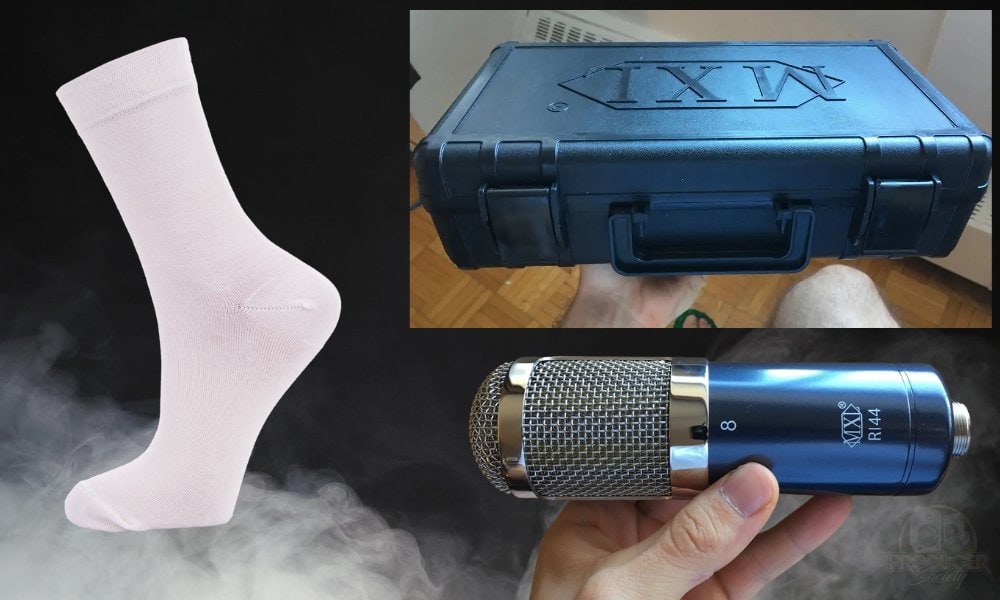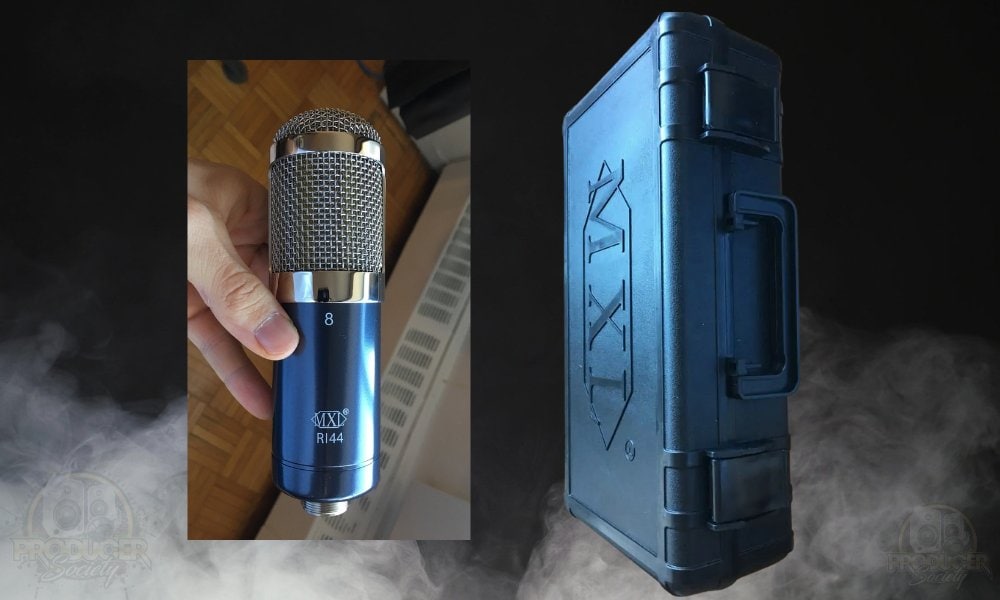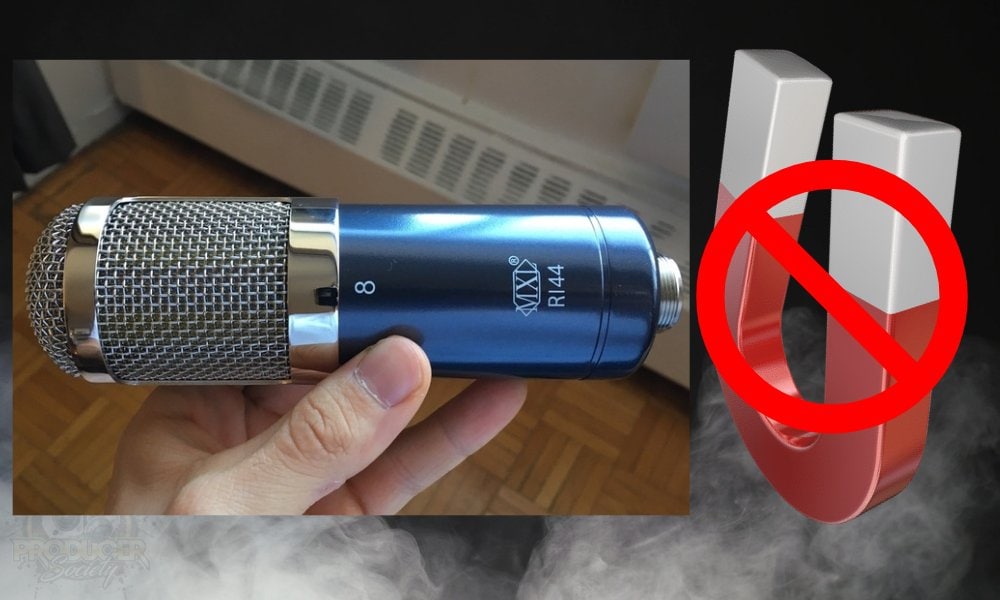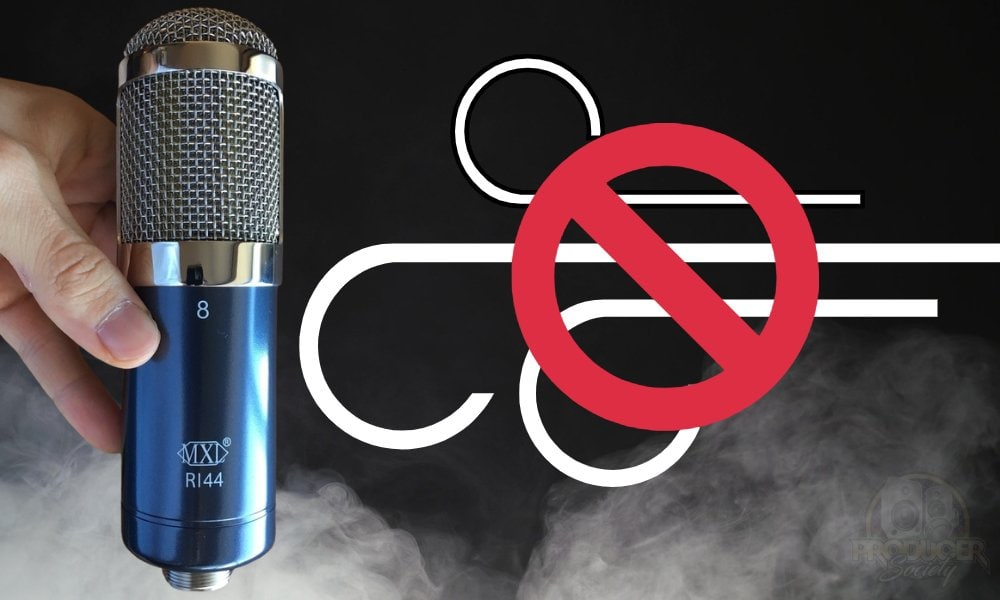Generally speaking, ribbon microphones should be stored vertically so the ribbon doesn’t bend or stretch over time due to gravity. However, horizontal storage is perfectly fine if it’s temporary. You could also use a plastic cover and silica gel pack although it’s not entirely necessary.
In the music world, there is a lot of talk about the ribbon microphone because a lot of us have been led to believe that these mics are super delicate and could break if you even look at them. I was also one of these people because I didn’t have a lot of experience with them and could only go off other peoples’ opinions.
With all that said, it’s been a few years and I know now that a lot of the precautions people take are often disruptive to your workflow, overly cautious, and probably unnecessary. I’m not a ribbon microphone expert but I’ve owned an MXL R144 for about 3 years and it works just fine despite not taking perfect care of it.
For instance, I’ve used it without a pop filter, I’ve stored it vertically, I’ve bumped it a bunch of times, and undoubtedly hurt it in other unforeseeable ways and it still works just fine. And the MXL R144, according to the internet, isn’t even that great of a ribbon mic.
6 Tips For Storing A Ribbon Microphone So It Lasts

While it’s certainly not the best ribbon microphone to use, one of the great things about the MXL R144 is the fact it comes with a shock mount as well as a sturdy hard shell case.
I raved about this in my review of the mic, but this makes it super easy to store, unlike a Shure SM58 which comes with a little pouch (although it is a nice little pouch).
1) Use The Case That The Mic Came With
![The MXL R144 [Ribbon Mic] Case](https://producersociety.com/wp-content/uploads/2023/02/The-MXL-R144-Ribbon-Mic-Case-.jpg)
As I was saying to you earlier, the MXL R144 comes with a nice case and a decent shock mount which is great value for the price. Assuming you don’t have a case for your ribbon microphone, it would be worth your time to get one because they are ultimately the best way to protect your gear.
Especially a decent hard case like the one shown above that can be put in any position in any part of your house without having to worry about a thing.
Additionally, you can set it up vertically which is a common recommendation made by ribbon microphone manufacturers like Royer (even though you don’t necessarily have to store their models vertically). Let’s talk a bit more about this now.
2) Store The Case Upright So The Mic Also Sits Upright

Frankly, this is something I never actually started doing until I started researching ribbon microphones including how they work, what they’re used for, myths surrounding them, as well as some other information on how to use and store them.
I haven’t had any issues with my MXL R144 since I bought it and I haven’t stored it even once vertically. That said, some of the more reputable companies and people who know their stuff say it’s wise to do this, so it would be best to follow their advice for prudence’s sake.
3) Use A Mic Cover Or Wind Screen To Cover The Mic During Temporary Storage
![A Microphone Cover - How to Store Ribbon Microphones [EASY]](https://producersociety.com/wp-content/uploads/2023/02/A-Microphone-Cover-.jpg)
It’s always a good idea to have a mic cover of some kind for your device, regardless of whether you’re putting it in storage or not. This is just a good practice for keeping your stuff safe, and a proper cover will eliminate some of the plosive sounds, ie, the “p” sound you make with your mouth.
Another thing that may surprise you is you can use actual socks as a pop filter for your microphone. For most people, it takes about 2 standard socks for it to actually be effective as a pop filter.
This will also conceal it from the elements a bit, but more importantly, it’ll protect it from people bumping into it and other late night studio shenanigans.
4) You Could Use Silica Gel Packs Inside The Case

I could see how moisture would be an issue in a place like Miami, Florida, or in Costa Rica, but where I live in Canada, it’s not uncommon for temperatures to get down to around -35C. It gets quite dry as well, as you can imagine, especially if your place uses electric heating.
Either way, some people on the Gear Space Forums say they do this.
As I said, it’s probably not a bad idea if you live in a humid climate, and it certainly wouldn’t hurt to do something like this if you intend on storing the microphone for the long term. Perhaps a more important tip though is to keep the mic away from magnetic objects.
5) Don’t Store The Mic Near Intensely Magnetic Objects

And I would say this advice goes for storing any technological devices. As a general rule, I try to keep any magnetic stuff away from my electronics whether they pose a significant threat or not. Certain people may be more at risk than others depending on what type of materials they’re surrounded by.
If you’re a guitar player, for instance, you may find yourself using 0000 steel wool at times. As a matter of fact, I just used some the other day when I was setting up my nylon string guitar for an article on Traveling Guitarist. You want to keep your ribbon mic away from stuff like steel wool remnants. Keep it as far away as possible.
6) Keep The Ribbon Mic Away From Strong Air Currents (Fans or Wind)

This means you should keep your ribbon microphone away from compressed air, fans – whether industrial or for home use, and the wind. And this seems to be the consensus online. If you check out Royer’s Dos and Donts List, for instance, they state this as well. That’s a great article by the way and you should check it out. Their FAQ is solid too.
Other Articles You May Be Interested In
- How To Connect A Ribbon Microphone To Your Computer [EASY]
- What Is An Old-Fashioned Microphone Called? [ANSWERED]
- How to Connect A Microphone to GarageBand iOS [iPad/iPhone]
- How to Use the Scarlett 2i2 With A Microphone [EXPLAINED]
- What’s The Difference Between A Dynamic And Condenser Microphone
Important Things to Note About Storing Ribbon Microphones
1) If You Store The Microphone In Its Case And Use Proper Mic Technique, It’ll Be Fine
As I was saying at the start of the article, I think. a lot of the hype around ribbon microphone vulnerability and delicacy is just that: it’s hype. If you generally take good care of your electronics, you’ll probably do just fine with your ribbon mics.
2) Much Of The Ribbon Microphone Advice Is Relevant For Only The Older Mics
Something I’ve noticed about ribbon microphones and the discussions surrounding them online is that it appears a lot of people are basing their advice on out-dated technology. In other words, people act like the ribbon mics made in 2023 are the same as the ones from 1923.
I think a lot of it is based on or comes from a time when ribbon microphones actually were delicate and super easy to break.
According to this video from Sweetwater, when ribbon microphones were first made in the early 1920s, they were fairly bulky and vulnerable. These days, I think they’re a lot more durable.
Additionally, some of them are even active (take phantom power). It’s not uncommon for people to say that if you run phantom power through all ribbon mics, you’ll totally destroy them.
But as it turns out, there is a difference between passive and active ribbon mics. Some of them are designed to function with phantom power and won’t work properly unless they get it.
Gear Mentioned
1) MXL R144 (on my Page)

 Written By :
Written By :